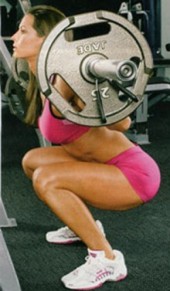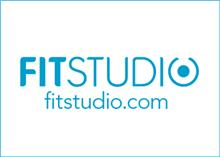My Chest Specialization Program
April 2, 2012 by danny · Leave a Comment
When you focus on bringing up a body part (or two), you’re dealing with a different animal. If you try to keep the same volume/intensity for the rest of your body, it’s just not going to work – something has to give! While on a specialization program, the goal for your rest of your body is maintenance.
In other words, while I’m trying to improve my chest (specifically my upper chest) with this program, I know that my biceps or quads are not going to be making great improvements in strength and/or size. So I am simply trying to maintain the non-chest areas.
IF I did try to also make considerable improvements to my biceps + quads + shoulders (for example) while on a chest specialization program, it would be pretty much impossible to maximize chest development. Think of it like learning a new language: if my goal was to try to speak Spanish as fluently as possible before heading over to Spain in 30 days (wouldn’t that be nice!), it wouldn’t make sense to ALSO take a German and isiZulu (a language in South Africa) class at the same time. Doing so would slow me down in regards to becoming as fluent as possible in Spanish in a short period of time. Same thing with my (and your) body: try to bring up too many body parts at once, and none of them will improve much at all. Now, there are some caveats to this whole “body part specialization” thing, and I’ll include them in the “notes” section below.
There Are Many Ways To Skin A Cat
When embarking on a specialization program, most people up the frequency of said body part. In other words, if you usually hit your back one or two times per week, you may increase that to 3 times per week (or potentially more if you set it up properly with smart progressions built in). Ask most experienced people, and they’ll tell you that high frequency training for an area that you are trying to bring up is the way to go. Now, once you’ve determined the frequency, you can go about the program design in a number of ways…
-Body part split where you work that body part on it’s own (i.e. chest 3 times per week) and then have a separate day where you work all of the non-chest parts of your body together (again, just to maintain those areas).
-Full body training where you work the entire body at each training session, but you make sure to have a bigger focus on the body part that you are trying to bring up.
An upper/lower split where you really hammer the area that you are trying improve on upper body day (if it is an upper body part that you are attacking). And then on the lower body days, you decrease the volume to make sure you are keeping yourself pretty fresh when it’s time to hit the intended body part again. An example of this would be: if you usually do about 20 sets for your legs, you may reduce your overall sets to 12 while trying to bring up another area.
Those are just a few examples. If you are really creative you can come up with other ways to set up a specialization program. For example, here is mine…
Body part: Chest
Number of times I’m working the chest per week: 3
The Rest of the body: I’m hitting one or two other body parts on the same day that I am hitting chest.
The volume of the other body parts on these “chest days” is low so as not to interfere with my main intent.
My Program
Here’s an overview of what it looks like…
Day 1 – Chest (Back + Biceps)
This day consists of 3 chest exercises, 1 back exercise and 1 bicep exercise.
Day 2 – Chest (Legs)
This day consists of 3 chest exercise, 1 quad dominate exercise (2 sets of bulgarian split squats), and 2 hip dominant exercises (3 sets of TRX Leg Curls, and 1 set of high rep hip thrusts).
Day 3 – Chest (Triceps)
This day consists of 5 chest exercises (a couple chest supersets today, which is why it seems like there are so many chest exercises), and 1 tricep exercise.
Throughout these 3 days, I also have some ab work mixed in, as well as more “scapular retraction” exercises in the program. Exercises like “Supine Band No Money.”
This is to help ensure that I stay mostly balanced in my upper body pushing/pulling – so I can maintain good posture/shoulder health.
Notes
-When performing a higher frequency specialization program, make sure to ease into it on week 1 of the program (especially the first day of the new program). If you don’t, you’ll be too sore to get a good lift in for that same body part a couple days later.
-No, I am NOT “that guy.” You know, that guy that only does chest and/or biceps when taking on a specialization program. I’ve spent MANY hours squatting, deadlifting, performing chin-ups, bulgarian split squats, rows, etc. etc. So don’t judge me! ![]()
-Make sure you are consuming ample calories when trying to bring up a body part. It would be very difficult to get my chest to grow at all if my eating resembled that of a lst grader.
-If you are newer to training and haven’t put in YEARS of hard work, don’t worry about specializing any particular areas yet. Your “newbie” gains will allow you to improve all over your body. Save the specialization stuff for the time you “hit a wall,” in a few years from now.
-I must reiterate, training/eating should have a clear focus. For example – if you are trying to drop a considerable amount of weight, your training/nutrition should reflect that. In this case it would NOT be smart to say; “I’m hoping to lose 20 pounds by summer while bringing up my chest and shoulders.” Pick ONE MAIN GOAL, and attack that goal with everything you have.
-Girls can specialize too. Getting better glutes and shoulders for example, can go a LONG way in making your body look sexier. I mention this because I know *some* females think fat loss, fat loss, fat loss (cardio, cardio, cardio) 24/7/365.
-I chose to condense the rest of my training into the 3 chest days because of my schedule… raising the twins + all the basketball lessons + training sessions + the on-line writing & social media obligations, and I’m swamped! But if I had a little more time right now, I probably would have gone with 3 chest days + 1 “rest of the body,” day.
With beach season right around the corner I thought it only made sense to pick a “beach muscle” to hit extra hard right now! ![]()
Wish me luck!
If you have any comments, questions, or thoughts, let me hear them in the comments section below.
You can connect with me on twitter @DannyMcLarty
Changing Exercises Isn’t Enough
September 19, 2011 by danny · Leave a Comment
Here’s a look back at an article that I wrote sometime ago. In case you missed it when it was originally published, give it a look. I think it’s a great reminder for many people that are still stuck in the 3 sets of 10 reps at every training session, rut.
Changes Exercises Isn’t Enough
Too many people in the gym get caught in a rut. A typical trainee has been doing 3 sets of 10 reps with the same exercise for the last 5 years. This is a sure fire way to get burned out. Number one, performing the same exercise over and over and over again becomes really boring, really fast. And number two… KEEP READING
Smart Planning For a Better Body
September 5, 2011 by danny · Leave a Comment
Every now and then I like to bring back an old article of mine for you to see, in case you missed it the first time around. If you are BRAND NEW to training, then a lot of the information from this article is probably unnecessary for the time being. All you have to do is get in the gym consistently and work your ass off (and clean that diet up!).
However, if you’ve been doing the same exercises for 3 sets of 10 reps for a couple years now with changing it up, then this article is just for you! Although this article, “Smart Planning,” was published on Olesya Novik’s website – “Olicious Life,” which is primarily a female website – many guys out there will definitely find the info beneficial as well.
If you’re looking to improve the set-up of your program design, then check out Smart Planning.
Random Training Sessions vs Planned Training Sessions
May 10, 2011 by danny · Leave a Comment
Most people that have read my work and/or that have worked directly with me, know that I typically like to have a pre-determined plan going into my training sessions (and for my client’s sessions). Random training, where you just walk into the gym and “wing it,” has some definite drawbacks. At least in my eyes. Don’t get me wrong, there have been many trainees that have taken the wing it approach and gone onto have great physiques. For most people however, I believe working off a pre-planned workout to fit your goals/needs gives you the best opportunity to reach your goals.
I write up programs into “training blocks” that usually last 4-weeks (written up prior to day 1 of starting the program). The advantages here are…
- it allows you to track progress and gives you motivation to build on your numbers from week to week
- if you are newer to training it helps you more quickly determine what weight to use on weeks 2, 3, and 4
- it gives you enough time to stay with a movement and improve your form with that movement (if you randomly do a technically challenging movement, and do not perform that same movement again for a couple months, it will be very difficult to make progress with that movement)
- it helps to keep soreness down
Above are some of the main reasons that I like to work off a pre-written training plan. And just so you know, I am a BIG fan of “cybernetic periodization,” (going “by feel”). After all, if my program says 3 sets of 6 for chin-ups but I just feel UNREAL that day, I give myself the freedom to add a set or two. So, I like to work off of a program, while giving myself (and again, my clients) the option to slightly modify where necessary/optimal. If you want to get more of my thoughts on periodization, check out this older post – Some Thoughts on Periodization.
For this post, I want to talk about the last bullet point that I made above; “it helps to keep soreness down.” For anyone that works hard, some soreness is inevitable. When you switch to a different exercise and/or a different rep scheme, soreness is quite often going to be there. For example, if I haven’t done RDLs for awhile, my hammies are usually sore for 3-5 days. When I repeat that exercise on week 2 of the program however, often times I am not sore at all. Remember, soreness does NOT equal results. Those that go out of their way to be sore (by always adding more sets and/or tourcher techniques, and random workouts are the norm), usually spend more time recovering, and less time working out. Even if they workout frequently, performance can be greatly impaired.
 I finished my last training block about 4 weeks ago. After that program I decided not to write up my next block because my wife is due to deliver babies (yes plural, as in twins!) any day now. At the time where I usually would be putting the finishing touches on my upcoming program, I decided that I didn’t want to get a week into it only to have to stop and take a break for the babies. I figured that I would wing it for a week or two, get situated to the babies while helping take care of my wife, and then get back to writing up my new programs every 4 weeks, like usual. Well, here we are about 4 weeks later, and those babies are still cooking – which is a good thing. They are already behaving look a good boy and girl, or a good boy and boy, or a good girl and girl. Who knows? We decided not to find out the sexes, should be a FUN day in the delivery room!!!
I finished my last training block about 4 weeks ago. After that program I decided not to write up my next block because my wife is due to deliver babies (yes plural, as in twins!) any day now. At the time where I usually would be putting the finishing touches on my upcoming program, I decided that I didn’t want to get a week into it only to have to stop and take a break for the babies. I figured that I would wing it for a week or two, get situated to the babies while helping take care of my wife, and then get back to writing up my new programs every 4 weeks, like usual. Well, here we are about 4 weeks later, and those babies are still cooking – which is a good thing. They are already behaving look a good boy and girl, or a good boy and boy, or a good girl and girl. Who knows? We decided not to find out the sexes, should be a FUN day in the delivery room!!!
Where was I? Oh yeah, my rare random training phase. How do you think this has been going for me? Pretty damn bad! I am sore pretty much everyday of the week (not fun). But that’s what often happens when you just walk into the gym, throw a workout together, and don’t allow your body time to adjust to the program from week to week. My motivation to train isn’t as high as usual, and due the constant soreness, my performance is down.
If this sounds anything like you, I hope this motivates you to get on a plan (a “training block”) and stick with it for ~4 weeks before jumping onto the next program (hopefully one that builds on the previous training block). My always sore glutes, pecs, hamstrings, and triceps are constant reminders that all this randomness is not the way to go. I’m really looking forward to getting back to my pre-planned training programs!
Some Thoughts on Periodization
August 10, 2010 by danny · 7 Comments
The scary P word. I’ve known many people that would prefer to spend the entire day at the dentist rather than talk (or think about) periodization. Most people just want to go lift and turn their brain off for one hour, 3 to 4 days out of the week. To a certain point, I can see why this is the mind-set of many trainees. After all, you don’t have to look very hard to hear one trainer make a particular suggestion (no matter what the topic – reps, sets, form, tempo, etc), only to read 5 other trainers give 5 different opinions. Well, I’m here to help simplify.
I’m not going to get into a 12-month periodization plan that involves in-season, early off-season, general off-season, and pre-season planning. If you train athletes and are looking for a great resource, check out Eric Cressey’s, “The Ultimate Off-Season Training Manual.” This is a must for your coaching library!
For the purposes of this post however, I’m not going to be giving my thoughts on periodization for athletes (although some of this information can be useful if you are an athlete or train athletes). I’ll be speaking more to the trainee just looking to improve his or her health and physique.
-For the most part, you don’t need to plan more than a month in advance. Don’t get me wrong, I do think it is smart to look down the road for more than a month at what you are looking to accomplish. For example, I don’t recommend doing three straight blocks focusing on hypertrophy, then move on to a fat loss phase for a month, only to go right back into a hypertrophy phase. Just randomly throwing a fat loss block in there doesn’t really fit, and probably would hurt your chances to maximally put on muscle. But the bottom line, don’t sit on your butt for a month straight trying to figure out the perfect macrocycle when you could have been in the gym getting closer to your goals during that time.
-Psychology/motivation is huge! Yeah, full body (FB) training is great for fat loss. But let’s say that you just spent your last two training blocks (8 weeks total) training FB and you CAN’T STAND the thought of going into another FB block. After all, it can be very draining to know that you are going to be doing a deadlift or squat variation AT EVERY SINGLE session, EVERY SINGLE week. Even if a body part split may be less than perfect for fat loss purposes, it can be very motivating to know you are about to head to the gym, and NOT have to squat or deadlift. “Today’s back and biceps? Sweet, I can’t get to the gym soon enough!” Be sure to keep this in mind as you head into your next training block (or a block sometime down the line).
-I’ve tried just about every combination of fluctuating volume over the course of a training block (4 weeks). I’ve tried the Cressey Performance way (at least this is the way they typically set up a block the last time I checked), which is;
- Week 1 – High Volume
- Week 2 – Medium Volume
- Week 3 – Very High Volume
- Week 4 – Low Volume (Deload)
Then, there is a the Results Fitness way (again, last time I checked);
- Intro Week
- Base Week
- Overload Week
- Shock Week
Coach Alwyn Cosgrove sets it up so each week is harder than the next. Essentially, you build up each week so by the last week you are hitting your highest loads of the block and maybe setting some PR’s in the process. Then the next week you will start a new block, with the lowest volume (basically, your deload week).
There are other ways to set up this week-by-week fluctuation in volume/intensity. But right now, here is what I have been doing for some time now…
- Week 1 – Intro Week; Volume is lower than week 2 and 3 and I stay a little further from failure on this week. Basically, when bar speed is slower than rep 1, I stop the set. This isn’t set in stone, as I’m not really too scared about overtraining if I am doing some curls. So if I “grind” out a few reps on certain exercises, I’m cool with it. But I doubt you’ll see me doing multiple sets to failure with front squats, for example.
- Week 2 – Volume goes up and I may have a few more of the “grindy” reps than on week one. Still, I never go ’til I purposefully miss a rep
- Week 3 -Similar to week 2
- Week 4 – Deload week; volume is similar to week 1, maybe even a little lower (for the females, check out this article that I wrote awhile back – something to think about)
Justification
When I was doing the Cressey Performance set-up, I personally didn’t like to go into a high volume week when starting a new block. In week one of a new block, you are switching up exercises, sets, and reps. This greatly increases the chances of soreness. And then add to the fact that it is high volume week, I found this to be a recipe to have me limping around for days (especially on exercises that tend to make us sore anyway. i.e. RDLs). This is why I have since switched to week 1 being a low(er) volume week. I figure, I am going to be sore anyway on week 1, why make it even worse.
The Results Fitness way is great, but here I found I didn’t like the psychological aspect real well. By the time week 4 of the same program roles around, I’m actually getting a little bored. The last thing I want to do is make this my hardest week. A slight mental break, by going low(er) volume, is nice here. Plus, it helps to keep my feeling fresh going into the new block in the week to come.
For the above reasons, I’ve settled in on liking the approach that I am currently using. I am also a fan of “cybernetic periodization” (going by feel). So, if week 2 or 3 calls for 5 x 3, but I am feeling like superman, I may do 7 sets of 3 that week. On week’s 1 & 4 I try to fight this temptation as I don’t think my superman-like feeling would be worth it as it would negatively effect the week to come (risk:reward = not worth it). I must say however, that although I do like cybernetic periodization, I am not a big fan of just winging it (although on rare occasion this can be good psychologically… there’s that word again). I am fan of having a training template, but giving yourself a little freedom to adjust according to how you are feeling on that particular day.
I definitely do NOT think that the Cressey Performance and Results Fitness plans are wrong. You can probably look at ANY 4-week set-up and find something imperfect about it - including the model I am currently using. When I work with a client long enough, quite often I will have him/her try a few types of 4 week set-ups. I will go over the potential pros and cons with them, and get their thoughts after trying each plan. Together we then go with a plan that gets them the most fired up and motivated to train. Thus far, “my” current 4-week plan has been the most popular with my clients. This doesn’t necessarily mean anything, I’m just sayin’. ![]()
Finally, if you are reading this and are in your first year of serious lifting, you should look at most of the above as a bunch of mumbo-jumbo. BUT, I want you to save this, study it again after a year, and consider my thoughts as far as which training split to use (answer – use them all ![]() ), and which 4-week plan to go with. Remember, consider both physiological, and psychological factors. Happy planning!
), and which 4-week plan to go with. Remember, consider both physiological, and psychological factors. Happy planning!




















